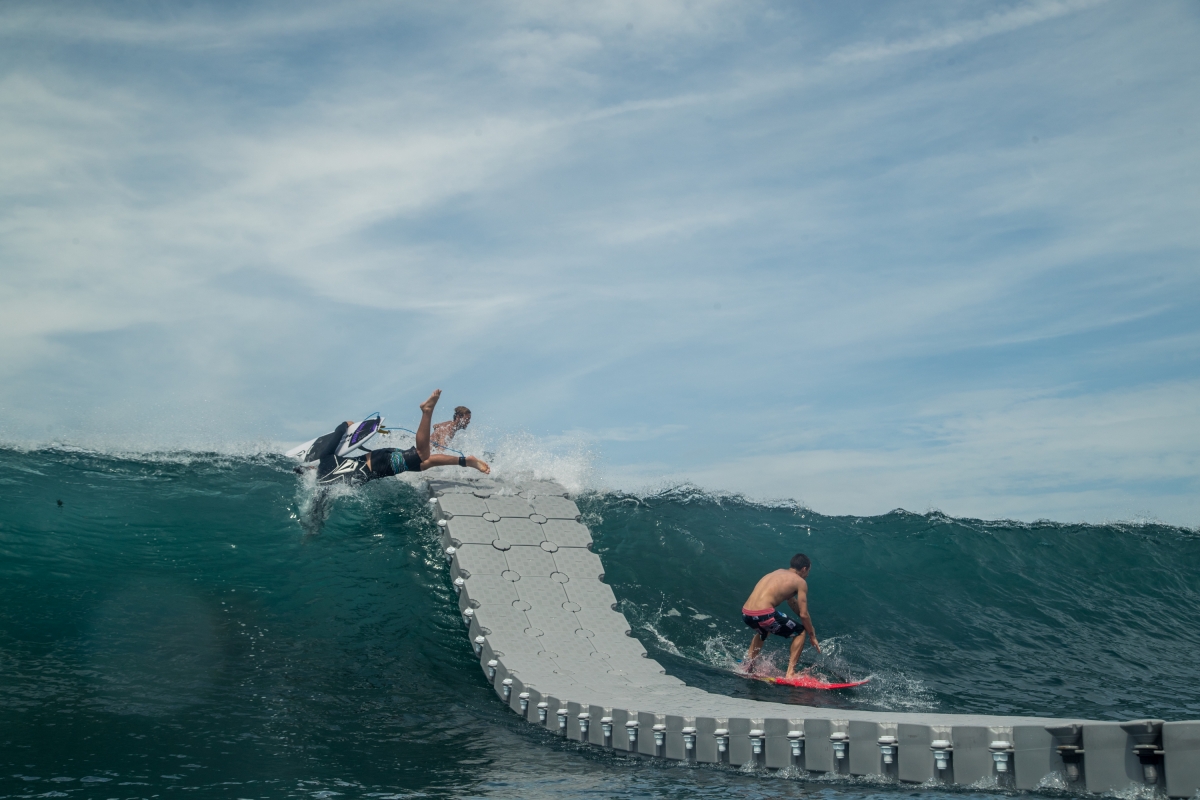Just A Friendly Reminder: Surfing Will Always Be Ok
Yeah, everything sucks right now, and yeah, the surf industry will look entirely different on the other side of the covid-19 pandemic. But—and this is a big BUT—we can always go surfing. Except for right now. We can’t go surfing right now. But that’s ok too.
The ghosts of surfboards past have been left to their own devices. Alone in Business Park in San Clemente, the Surfing Heritage and Culture Center’s doors are locked. Hyson down-railers, Hobie balsas, Simmons’ personal twin, Rick Griffin’s original “Pacific Vibrations” artwork, the history of surfing sits idle right now.
When we think of the impact of all of COVID-19 pandemic, it’s undoubtedly going to shake the surf industry to the core. From the biggest brands—like Volcom and Boardriders, which are reportedly in brand “survival” mode—to the very beaches we surf, which are largely being locked down around the world, surfing as we know it will change.
But here’s the rub. Surfing isn’t going anywhere.
“We literally have centuries of tradition to lean on,” says Glenn Brumage, the director at the Surfing Heritage and Culture Center (SHACC) in San Clemente.
“Our doors are closed, but that doesn’t mean we can’t share all of this history and heritage,” he continues.
As the old adage goes, you can’t know your future if you don’t know your past. And while the heart of the Orange County surf industry wonder what’s next, it’s worth taking a breath and keep in perspective that surfing has faced much larger challenges in the past.
“Surfing has a way of adapting to the times,” says Brumage. “It’s constantly evolving, but the basic premise remains the same—we all want to go to escape to the beach, and we all want to ride a few waves if we can and wash off the ‘straight’ world.”

Ain’t nothing straight about it.
From the missionaries that tried to stamp out surfing in Hawaii in the 1800s, to a pair of World Wars that laid waste to generations of young men, to the Vietnam War, drug runners, global acts of terrorism, worldwide recessions and such, at the end of the day, surfers continue to find a way to get in the water.
As I write this I’m wading through a flood of information about beach closures, surf shop closures, industry cutbacks, organizational redirections and quick pivots to content delivery. It’s simply too much to report on. We’re fucked. But we’re not fucked because surfing, at its core, doesn’t require a whole hell of a lot…and we’ve been social-distancing since the second guy showed up at Malibu.
Shit’s changing before our eyes. And while board sales will drop, the days of the $100 boardshorts are probably over, and it’s only a matter of time before mass arrests take place on the point at Lowers, surfing will endure.
“You saw it on the beach at Trestles in the ‘60s when Nixon was there. It was a full battle between surfers and the government,” says Brumage. “But look at it today, it’s one of the most popular surfing grounds in the U.S. Times always change.”
Before World War II, nearby San Onofre was the bastion of California surfing. Then the war came and all the boys shipped out overseas. But after the war, surfing boomed. And it boomed big. We got wetsuits and foam surfboards as a result of WWII.
“We have to keep moving forward,” says Brumage, who’s decided to lean into digital content while his museum is closed. “So we’re going to celebrate surfing, its colorful stories and characters, and that’s just what we have to do right now until this all turns around.”














Comments
Comments are a Stab Premium feature. Gotta join to talk shop.
Already a member? Sign In
Want to join? Sign Up